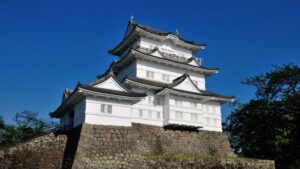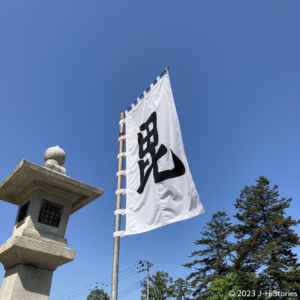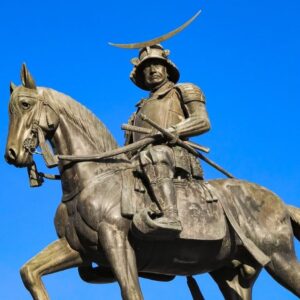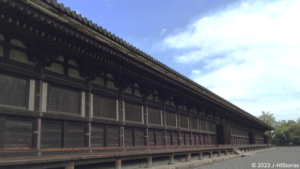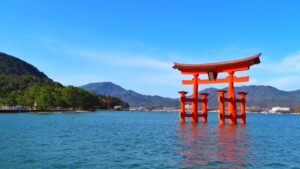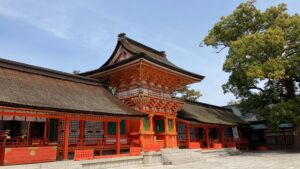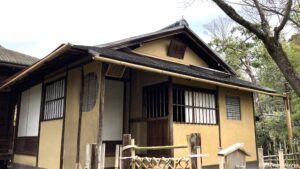Odawara Castle: Hojo Clan's Independence from Shogunate and People-Centered Policy
A remarkable Hojo clan, a pioneering and the final force of Sengoku Daimyo, a territorial lord in the Warring States Period (1467-1573), who reigned supreme in the Kanto region for a century-spanning five generations. Their unwavering ambition was to be independent of the vested interest of the Muromachi Shogunate (1336-1573) and to safeguard the livelihoods […]
The God of War, Kenshin, and the Muromachi Shogunate Revival
Uesugi Kenshin (1530-1578, 上杉謙信) was a fervent believer in the god of war, Bishamonten (毘沙門天), using one of the letters of '毘' as an emblem on his own flag, and fighting under the banner of 'Bi'. During his lifetime, he lost only twice out of 71 battles, making him a true military god. During the […]
One-Eyed Dragon, Date Masamune, The Great Samurai's Legacy and Beliefs
One-Eyed Dragon, Date Masamune: The Great Samurai's Legacy and Beliefs
Who Built Sanjusangen-do Hall and What does Sanjyusan mean?
The Sanjyusangen-do Hall (literally 33 intervals), officially Rengeoin Temple, resides in the heart of Kyoto. Constructed in 1164 by the retired Emperor Go-Shirakawa (1127~1192, 後白河天皇), or Go-Shirakawa-In, with the financial support of Samurai, Taira Kiyomori, to pray for the safety and prosperity of the nation and people. This remarkable 121-meter-long wooden structure features 33 spaced […]
Konkai Komyoji Temple, the base of the Shinsengumi samurai who followed the Bushido
On the days of the vernal equinox and the autumnal equinoxes, the Konkai Komyoji Temple offers a breathtaking view of the setting sun turning vermilion in the western sky. The temple was founded in 1175 when Honen, a founder of the Jodo sect of Buddhism, descended from Mount Hiei to spread his teachings here. Situated […]
Cherry Blossoms and Red Leaves at Hakodate Goryokaku Fort
Goryokaku Fort (五稜郭) is Japan’s first western-style star fort located in Hakodate. The view from the top of the observatory, situated 90 meters above the ground of Goryokaku Park Tower, offers a truly spectacular sight. The iconic five-star shape, filled with approximately 1,600 cherry blossom trees in spring and adorned with vibrant autumn leaves in […]
Itsukushima Shrine, Itsukushima Detiy smiled on Samurai, Mori Motonari
Itsukushima Shrine - UNESCO World Cultural Heritage site - seemingly floating on the water, enchants visitors with the atmosphere of its spiritual power in the vermillion-lacquered shrine. It’s located on Miyajima Island in Hiroshima prefecture, traveling just 10 minutes by ferry from the port. Miyajima Island has been adored as “the island where deity resides” […]
The History of Hachiman Deity Worshipped at Usa Jingu Shrine, Protecting Japan and Samurai
Usa Jingu is the head shrine of approximately 460,000 Hachimangu shrines, out of a total of 110,000 shrines in Japan. This makes it the largest number in Japan. The three major Hachimangu shrines are Usa Jingu in Kyushu, Hakozakigu in Kyushu, and Iwashimizu Hachimangu in Kyoto. The deity worshipped at Usa Jingu Shrine, Hachiman Omikami, […]
The Standing Original Castle, the History of Inuyama Castle
Inuyama Castle, a national treasure, stands on a small mountain overlooking the Kiso River, dating back to 1537. It holds among Japan's five castles designated a national treasure, including Himeji, Matsumoto, Hikone, Inuyama, and Matsue. The castle was constructed during the tumultuous Warring States period, and a dizzying array of castle owners changed due to […]
Samurai Tea Ceremony, Joan is The Best Teahouse to Visit
There are three existing tea rooms in Japan designated as national treasures. They are the Taian at Myokian in Kyoto built by a tea master, Sen-no-Rikyu, the Mittan at Daitokuji Temple by Kobori Enshu, and the Joan at Urakuen Garden in Aichi prefecture by Oda Nagamasu in his later life. Oda Nagamasu, also known as […]

